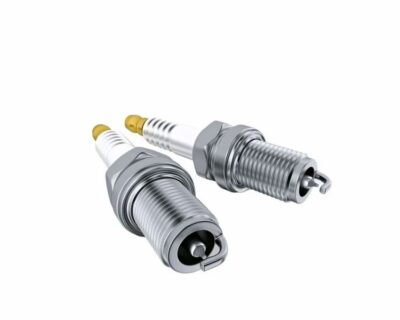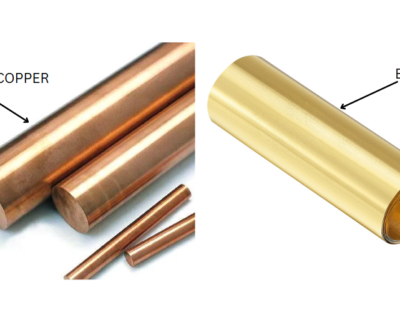Blogs

Beryllium Copper vs Chromium Copper: The High-Performance Alloy Face-Off (UNS C17200 vs UNS C18200)
When most engineers compare Beryllium Copper vs Chromium Copper, they ask:
“Which one costs less?”
But here’s the truth: It’s the wrong question.
Because when your product fails early, causes downtime, or risks safety, the cheaper metal suddenly becomes very expensive.
Instead, ask:
- Which alloy can handle high stress without wearing out?
- Which one prevents tool failure, sparks, or conductivity loss over time?
This mindset shift helped a major OEM reduce replacements by 70% simply by switching from Chromium Copper to Beryllium Copper.
In this blog, we break down everything you need to know—from composition to real-world ROI—so you can stop guessing and start engineering smart.
Chemical Composition
| Property | Beryllium Copper (C17200) | Chromium Copper (C18200) |
| Copper (Cu) | ~98% | ~98.6% |
| Beryllium (Be) | 1.80 – 2.00% | — |
| Chromium (Cr) | — | 0.6 – 1.2% |
| Other | Cobalt, Nickel (trace) | Trace impurities |
Key Properties Comparison
| Feature | Beryllium Copper (C17200) | Chromium Copper (C18200) |
| Hardness (after aging) | Up to 40 HRC | ~18–30 HRC |
| Electrical Conductivity | 22% IACS | 80–90% IACS |
| Thermal Conductivity | 105 W/m·K | 320 W/m·K |
| Tensile Strength | Up to 1400 MPa | ~400 MPa |
| Fatigue Resistance | Excellent | Moderate |
| Workability | Moderate | Excellent |
| Corrosion Resistance | Very good | Good |
| Non-Sparking | Yes | No |
Applications (Explained Briefly)
✅ Beryllium Copper (C17200)
- Aerospace: Ideal for springs, bushings, and fasteners due to its high strength, fatigue resistance, and ability to perform under vibration and pressure changes.
- Oil & Gas: Used for non-sparking tools in hazardous environments where safety from ignition is critical.
- Electronics: Preferred in high-reliability connectors and switches thanks to its conductivity and mechanical strength.
- Defense: Powers precision components in sensors and targeting systems, offering corrosion resistance and long lifecycle.
- Medical: Safe for MRI and imaging equipment due to its non-magnetic nature and excellent machinability.
✅ Chromium Copper (C18200)
- Resistance Welding: Commonly used in welding electrodes for its heat resistance and durability under repeated cycles.
- Electrical Systems: Serves in contacts, switchgear, and breakers where high conductivity and erosion resistance are essential.
- Heat Sinks: Efficient in thermal management applications in electronics and laser systems.
- Industrial Dies: Used in die casting and mold tools for its balance of hardness and heat conductivity.
- Power Conductors: Performs well in heavy-duty electrical systems, including busbars and grounding rods.
Technical Specifications & Standards
Beryllium Copper (C17200)
- ASTM B194, AMS 4533, RWMA Class 4
- Shapes: rods, plates, sheets, strips, wires, bars
Chromium Copper (C18200)
- ASTM B170, RWMA Class 2
- Shapes: bars, rods, tubes, electrodes
Life Cycle & Cost Analysis
- Initial Cost: Beryllium Copper is 3–4x more expensive.
- Lifecycle: Beryllium Copper lasts up to 5x longer.
- Downtime: Chromium Copper often leads to higher tool wear & replacements.
- ROI: Beryllium Copper = longer-term gains.
Environmental Impact: Greener Through Durability
Every extra replacement = more carbon footprint. More scrapped parts. More waste.
Beryllium Copper’s superior lifespan means fewer replacements, less energy used in recycling, and fewer disruptions—making it an eco-conscious engineering choice.
Why Beryllium Copper Is More Effective Than Chromium Copper
- Stronger: Beryllium Copper has up to 3x the strength of Chromium Copper, making it ideal for high-stress, fatigue-prone parts.
- Longer-lasting: It lasts up to 5 times longer, reducing replacement costs and machine downtime.
- Safer: It’s non-sparking and non-magnetic, perfect for hazardous and sensitive environments.
- More Sustainable: Fewer replacements mean less scrap, lower carbon footprint, and greener operations.
- Better ROI: Though more expensive upfront, Beryllium Copper saves money long-term by reducing maintenance and failure risk.
Conclusion: Beryllium Copper vs Chromium Copper – What’s Your Pick?
In the debate of Beryllium Copper vs Chromium Copper, it’s not just about price—it’s about performance, longevity, and impact.
- Choose Beryllium Copper (C17200) when strength, safety, and durability matter most.
- Choose Chromium Copper (C18200) for high conductivity and cost-effective electrical use.
While Chromium Copper suits many standard applications, Beryllium Copper often proves more valuable over time, reducing downtime, replacements, and environmental waste.
Smart materials = smarter decisions.
At Domadia, we partner with forward-thinking manufacturers who demand more from their materials. If you’re ready to build products that outlast, outperform, and outclass—Beryllium Copper is where your future begins.
Visit our website: Domadia.com
Email: sales@domadia.com
Call/WhatsApp: +91-9594066275
Follow us on LinkedIn: https://www.linkedin.com/in/kairav
Talk to: Er.Pankaj Domadia | Kairav Domadia | Aadil Domadia | Pragati Sanap | Pooja N N | Shivani Kanojia




